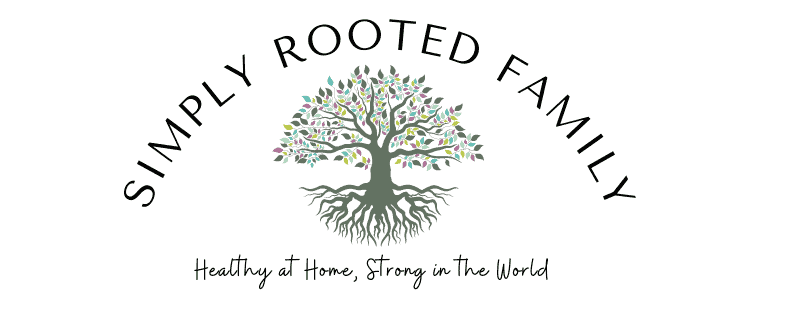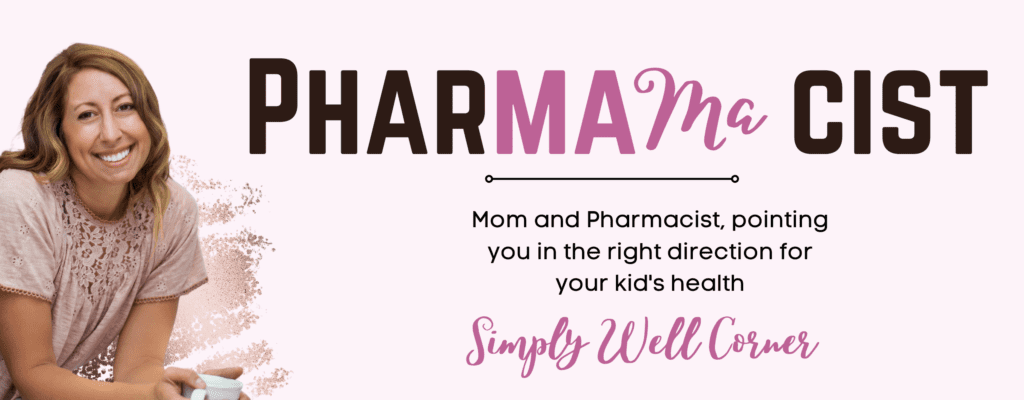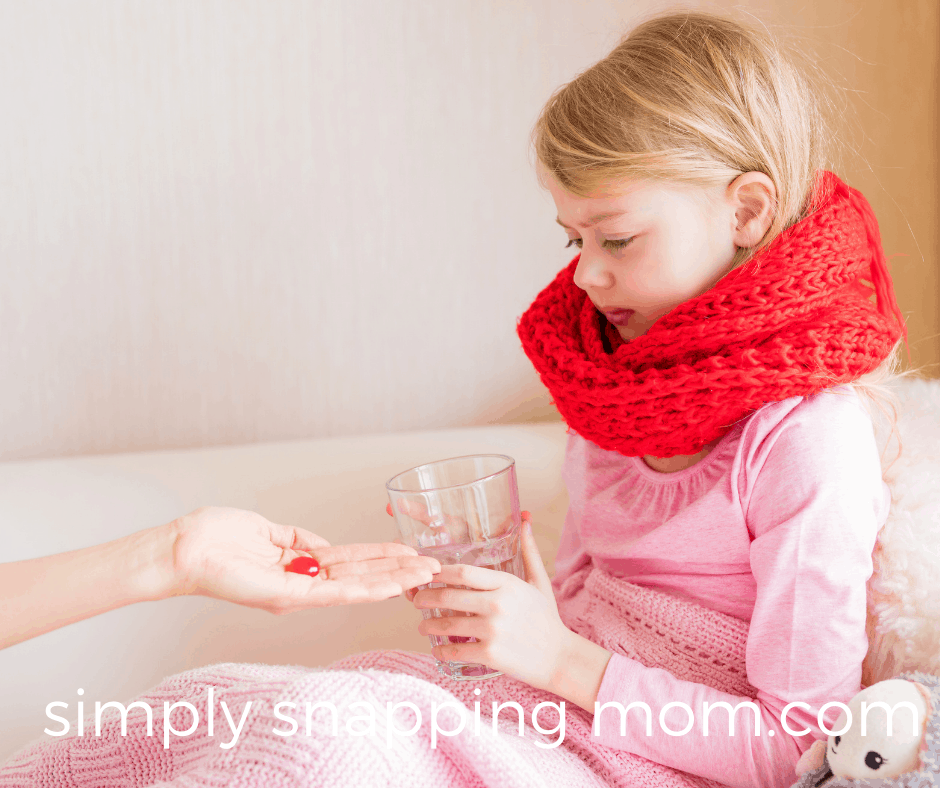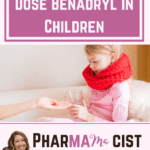As part of the Simply Well Series, we review the most frequently asked questions I receive in the pharmacy. In this edition, I answer “What is your recommendation on how much Benadryl to give a 2 year old?”, and everything else you want to know about antihistamine usage in kids.
I would love to start with “as we approach runny nose season”, but if your kids are anything like mine we never truly leave “runny nose season”. Young children are prone to nasal allergies and cold symptoms almost year-round. In other words, we can, with out a doubt, always count on our kids to be snotty.
Luckily, there are plenty of antihistamine medications that can help relieve these symptoms and many other ailments even in young children. Diphenhydramine (under the brand name Benadryl) is an over the counter antihistamine that is always on my check-list for our first aid kit, though I will explain why I rarely use it.
In addition to helping with cold and allergy symptoms, Benadryl has many other powerful and proven benefits in other areas.
However, it is important that parents understand certain things about this type of medicine so that it can be used safely, because there are many risks associated with it’s usage.
Below I will answer the most common questions I get at drug stores regarding the different reasons to administer Benadryl, the proper dose according to FDA recommendations, and the potential side effects associated with its usage.
What Does Benadryl Actually do?
Histamine is a chemical in the body that is released when the immune system senses an ‘invader’. When histamine is released, capillaries (or tiny blood vessels) become more permeable (or open up). This reaction allows other cells to enter the area to fight the “invader”.
While this reaction can be helpful, the body usually “over does” their job, leading to a host of unneeded reactions in the body. Blocking the histamine with a histamine blocker, such as Benadryl, can help with symptoms of allergies (such as watery eyes from hay fever), mild allergic reactions (such as food allergies), and hives.
It can also help with motion sickness and is sometimes used as a sleep aid.
Dosage Guidelines for Benadryl in Kids
Prior to giving your kid any medication (especially this one), it is smart to consult with a healthcare provider, especially if you think something is wrong. Never underestimate the symptoms of an allergic reaction.
The American Academy of Pediatrics (APP) provides detailed dosing guidelines for children.
The correct dose is based off the child’s weight and year of age in the dosing chart below:
| Child’s Weight (pounds) | 20-24 | 25-37 | 38-49 | 50-99 | 100+ |
| Liquid 12.5 mg/5 milliliters (mL) | 4 ml | 5 ml | 7.5 ml | 10 ml | — |
| Chewable or Fastmelt Tablet 12.5 mg | — | 1 tablet | 1 ½ tablet | 2 tablets | 4 tablets |
| Tablets 25 mg | — | ½ tablet | ½ tablet | 1 tablet | 2 tablets |
| Capsules 25 mg | — | — | — | 1 capsule | 2 capsules |
Safe Use in Children
As parents, our primary goal when it comes to drug administration is safety.
The Food and Drug Administration (FDA) warns against giving any cold or cough medicine containing an antihistamine to a child under the age of 2. According to the FDA, this type of medicine could cause serious side effects in toddlers and babies, including rapid heart rate and convulsions.
Although the label will have the age limit of 6 years old, Benadryl can be used in younger children under the direction of a health care provider.
As a general rule when administering the liquid form, one level teaspoon equals 5 mL; however, syringes and droppers are more accurate than regular spoons.
If you are looking for how much Benadryl to give a 2 year old, you would want to check in with the pediatrician first then find your child’s weight on the top row of the dosage table. Another option is to try a non-drowsy antihistamine, such as Claritin (generic name loratadine), which is approved for children 2 and older.

In fact, for treating mild cold and allergy symptoms in kids of any age, I recommend trying a non-drowsy or less drowsy antihistamine first. These include loratadine, cetirizine, and fexofenadine. Your local pharmacist can point you in the right direction.
Side Effects and Behavioral Changes with Benadryl
Antihistamines can bring much-needed relief to cold and allergy symptoms, but they can also cause some side effects. The most notable adverse reaction is sleepiness.
However, some kids experience the exact opposite reaction causing your child to be hyper and irritable.
Related: How to Treat Constipation in Kids
Other, more serious side effects include impaired school performance in kids who use it regularly for seasonal allergies, drowsiness, agitation, hallucinations, and—rarely—seizures and even death.
If your child has taken too much Benadryl, they may be at risk of an overdose. Symptoms of this may include:
- Agitation or nervousness
- Blurred vision
- Depression
- Difficult to wake or arouse
- Dry eyes, mouth, or skin
- Enlarged pupils
- Hallucinations of confusion
- Inability to urinate
- Rapid heartbeat
- Ringing in the ears
- Seizures or convulsions
Contact Poison Control at 1-800-222-1222 from anywhere in the United States if you think your child has taken too much Benadryl. If they are experiencing difficulty breathing or will not wake up, call 911 or seek medical attention immediately.
Final Thoughts
My son was stung by a bee this weekend. Before bedtime, my already bedtime-resistant son experienced extreme itching, which prevented him from sleeping. The Benadryl provided quick relief and helped him get a good night sleep.
While Benadryl has an important place in therapy, it is important to talk to your child’s doctor if they are under the age of 6. Other antihistamines work just as good and don’t have as many side effects.
Learn more about positive parenting, such limiting screen time for kids and stay a while to take part in other honest parenting discussions. And subscribe for our monthly newsletter!





Ultimate Guide to Treating Dry Skin in Kids -
Monday 30th of August 2021
[…] Related: How Much Benadryl can Your Child Take? […]